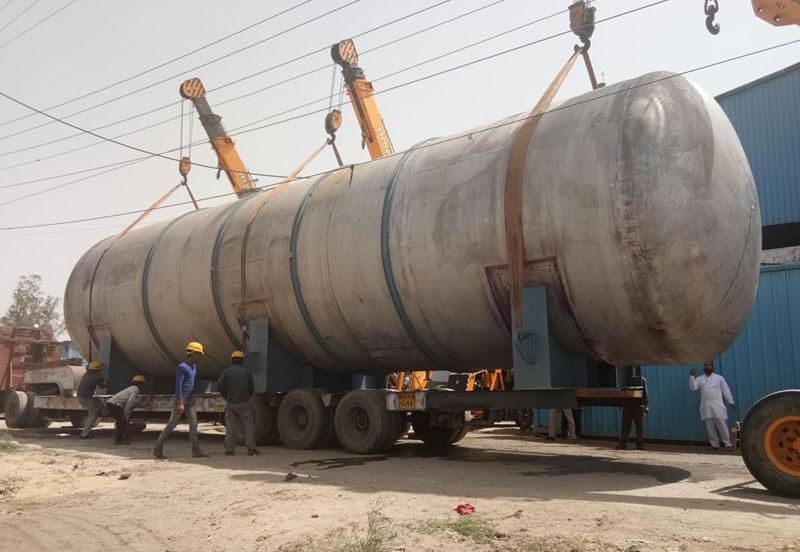Powder Transfer System – A Modern Solution for Clean and Efficient Material Movement

A Powder Transfer System plays a crucial role in industries that handle fine materials, chemicals, food ingredients, or pharmaceutical powders. The ability to move powder safely, efficiently, and without contamination is essential for maintaining product quality and operational reliability. Traditional manual handling often leads to dust generation, wastage, and inconsistent flow. Modern transfer systems overcome these challenges by providing closed-loop, automated, and hygienic powder movement.
Key Features, Benefits & Importance
A well-designed Powder Transfer System offers several advantages that significantly improve production performance.
1. Dust-Free and Hygienic Operation
One of the biggest benefits is the system’s ability to prevent dust from escaping into the environment. This is especially important in industries where hygiene and safety are priorities, such as pharmaceuticals, dairy, and food processing.
2. Consistent and Controlled Flow
The system ensures steady powder movement without clumping, bridging, or material segregation. This supports accurate batching, mixing, and downstream processing.
3. Reduced Manual Handling
Automated powder transfer minimizes human contact with materials, reducing contamination risks and improving worker safety.
4. Closed and Safe System Design
By keeping powders within sealed pipelines or vessels, the system protects workers from exposure to hazardous or allergenic materials.
5. Versatile Material Compatibility
Whether handling fine powders, granules, spices, additives, chemicals, or specialty materials, powder transfer systems can be customized to fit the application.
6. Lower Operational Costs
The reduced need for labor, combined with minimal maintenance and less product wastage, makes the system cost-effective in the long run.
Use Cases and Applications
A Powder Transfer System is widely used across a variety of industrial sectors. Some of the most common application areas include:
-
Pharmaceutical Manufacturing: For API transfer, excipients, and fine powdered ingredients.
-
Food & Beverage Processing: For flour, sugar, cocoa powder, spices, starch, and beverage premixes.
-
Chemical Industry: For pigments, additives, resin powders, catalysts, and specialty chemicals.
-
Cosmetics & Personal Care: For talc, powders, fillers, and active ingredients.
-
Dairy Plants: For milk powder, whey powder, and nutritional blends.
-
Bulk Packaging & Silo Loading: Supports large-scale powder loading and unloading operations.
These applications highlight how essential powder transfer technology is in maintaining high-quality production standards.
Why Choose a Powder Transfer System for Industrial Operations?
Selecting a Powder Transfer System offers several operational and long-term benefits:
-
Greater Precision: Ensures accurate material dosing and controlled product flow.
-
Enhanced Safety: Protects workers from airborne particles and hazardous raw materials.
-
Efficient Integration: Can be linked with mixers, conveyors, reactors, filling machines, and storage systems.
-
Scalable Solutions: Whether for small batches or continuous high-volume transfer, the system can be customized.
-
Better Cleanability: Options for CIP (Clean-in-Place) or easy manual cleaning help maintain hygiene.
-
Improved Production Speed: Faster powder movement reduces downtime and enhances process continuity.
These advantages make powder transfer systems a key investment for modern industrial processes.
Conclusion
A Powder Transfer System is an essential component for industries aiming to handle powders efficiently, cleanly, and safely. Its enclosed design, consistent flow control, and automation-friendly setup make it a reliable choice for applications where hygiene and accuracy matter most. As industries evolve toward more advanced and precise manufacturing methods, powder transfer technology continues to support smoother operations, reduced contamination risks, and improved productivity. Integrating the right system can deliver long-term returns and help maintain high-quality output across various sectors.
FAQs
1. What is a Powder Transfer System?
It is an automated system used to move powders from one point to another through sealed pipelines, ensuring clean and efficient material handling.
2. Which industries commonly use powder transfer systems?
Pharmaceutical, food processing, chemical, cosmetic, dairy, and nutraceutical industries frequently use these systems.
3. How does a powder transfer system ensure hygiene?
The system operates in a closed-loop design that prevents dust exposure, contamination, and material loss.
4. Can the system handle fragile or sensitive powders?
Yes, the system can be adjusted to handle delicate or moisture-sensitive powders with gentle transfer methods.
5. Are powder transfer systems customizable?
Absolutely. They can be tailored based on powder type, required capacity, conveying distance, and integration needs.
- AI
- Vitamins
- Health
- Admin/office jobs
- News
- Art
- Causes
- Crafts
- Dance
- Drinks
- Film
- Fitness
- Food
- Spellen
- Gardening
- Health
- Home
- Literature
- Music
- Networking
- Other
- Party
- Religion
- Shopping
- Sports
- Theater
- Wellness


